
It’s February and that means Valentine’s Day is on its way! Valentine’s Day is all about love, treats, pampering, chocolates, and flowers of course!
Flowers can brighten up any room, but did you know they can work wonders on our health as well? Flowers have long been a part of the Chinese healing tradition and continue to be used in Chinese herbal formulas today.
Let’s learn more about the use of flowers in herbal medicine and get a closer look at some of Chinese medicine’s most beloved flowers.
The Use of Flowers in Chinese Medicine
Even if you don’t think you’ve used flowers as “medicine” before, it’s likely you have! Have you ever sipped chamomile tea, taken a cough drop with echinacea, used a facial cream with calendula, or had a bath with soothing lavender essential oil? These are all flowers at work helping you relax, strengthen, and soothe.
Chinese medicine has used flowers as herbal medicine for millennia. Like other herbs, flowers can be used in teas, decoctions, pills, powders, salves, and tinctures. Because of their light and airy nature, many flowers treat conditions of the head (headaches, eyes, mental health) or at the surface of the body (skin, blood circulation, the onset of acute colds).
Some of the most enjoyable ways to use medicinal flowers is as a light tea. Consider steeping a few rosebuds for an stress-relieving tonic or chrysanthemum buds daily during allergy season to keep pressure headaches away. For these purposes, look online for a qualified raw herb reseller such as Rose Mountain Herbs.
Flowers are a beautiful way to connect with nature – both as medicine and in their natural form. The presence of flowers has shown to improve our mood, relieve stress, and inspire creativity. This Valentine’s Day consider how you can bring more flowers into your life this year through herbal teas and formulas, gardens, or even treat yourself to the occasional bouquet.
Chinese Medicinal Flowers
Whether you’re an herbal buff or completely new to the herbal scene, you’ve likely heard, seen, and smelled the most common Chinese medicinal flowers. Let’s get to know them better and learn how we can use them for health and healing.
Rose (mei gui hua) has properties to calm, relieve stress and enhance circulation.
Rose (mei gui hua) has been used widely around the world, both for its beauty and its medicinal properties. Rosebuds have a calm and settling effect on the mind and body. They promote healthy circulation of blood and qi to relieve menstrual pain, breast tenderness, PMS, stress, headaches, belching, and abdominal pain.
Rose products at Best Chinese Medicines
Rose is not a major ingredient in most prepared formulas, but it is a great addition to pre-existing formulas. A great way to incorporate rose into your daily routine is to have a cup of rose tea (find dried buds at tea shops or online) with your daily Chinese herbs. Rose is great to pair with formulas such as Shu Gan Wan, An Mien Tablets, or Six Gentlemen Plus.
-
Sale!
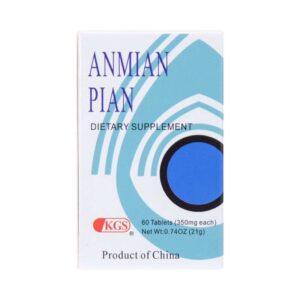 An Mian Pian-Lanzhou Traditional Herbs (KGS)
Starting at $8.99
Add to CartSelect options
This product has multiple variants. The options may be chosen on the product page
An Mian Pian-Lanzhou Traditional Herbs (KGS)
Starting at $8.99
Add to CartSelect options
This product has multiple variants. The options may be chosen on the product page
-
Sale!
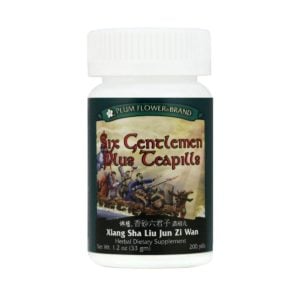 Plum Flower – Six Gentlemen Plus Teapills (Xiang Sha Liu Zi Wan)
$23.93
Plum Flower – Six Gentlemen Plus Teapills (Xiang Sha Liu Zi Wan)
$23.93 $31.30Add to CartAdd to cart
Chrysanthemum ( ju hua ) has properties to clear heat, relieve fevers, improve headaches, and clear red eyes
Chrysanthemum (Ju hua) is the pale-yellow bud of the chrysanthemum flower. It may look feeble, but it can pack a punch. Chrysanthemum is a strong heat-clearer which means it’s great for heat, redness, and irritation. It works specifically on the Liver system and the eyes to reduce allergies, red and itchy eyes, and headaches caused by irritability. It’s also a key ingredient in many natural cold and flu remedies.
Chrysanthemum products at Best Chinese Medicines
Chrysanthemum is found in several cold and flu formulas, like the go-to Gan Mao Ling. Because of its strong effect on the eyes, this flower is found in several eye formulas as well, such as Qi Ju Di Huang Wan and Ming Mu Di Huang Wan. These formulas both treat dry, painful eyes, pressure behind the eyes, blurry vision, and eye fatigue.
Honeysuckle (jin yin hua) has properties to clear heat and toxicity
Honeysuckle (jin yin hua) is a cooling, sweet flower that is most often used to cool excess heat. This herb targets the Lung system to treat inflammatory issues like bronchitis, colds, and sore throats with its antiviral and antibacterial properties. Honeysuckle can also be used in formulas for angry skin conditions like dermatitis.
Honeysuckle products at Best Chinese Medicine
The most famous formula that contains Honeysuckle is Yin Chiao Chieh Tu Pian (also called Yin Qiao). These formulas are both used for what acupuncturists call “wind heat.” This is a cold-like condition where a burning sore throat is one of the main symptoms. When building your herbal medicinal cabinet, Yin Qiao is a must-have!
Magnolia (xin yi hua) has properties to warm cold, clear nasal passages and eliminates phlegm
Magnolia (xin yi hua) is warm and spicy which helps it attack colds and chills at their onset. The special power of magnolia is to unblock the nasal passages when we suffer from sinus congestion or sinus headaches. Magnolia is often included in general formulas that treat early-onset colds, as well as sinus-clearing formulas.
Magnolia products at Best Chinese Medicines
Best Chinese Medicine carries a few products that use magnolia flower. The namesake Xin Yi Wan is used for allergies and acute sinus headaches. Bi Yan Tang is used for the regular cold with nasal discharge, stuffy nose, chest congestion, chills, and headache.
-
Sale!
 Plum Flower – Bi Yan Pian
Starting at $18.93
Add to CartSelect options
This product has multiple variants. The options may be chosen on the product page
Plum Flower – Bi Yan Pian
Starting at $18.93
Add to CartSelect options
This product has multiple variants. The options may be chosen on the product page
-
Sale!
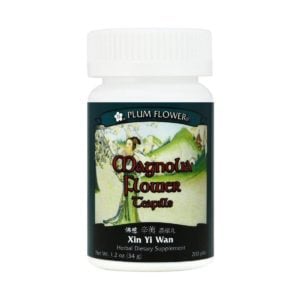 Plum Flower – Magnolia Flower Teapills (Xin Yi Wan)
$21.23
Plum Flower – Magnolia Flower Teapills (Xin Yi Wan)
$21.23 $27.90Add to CartAdd to cart
Safflower (hong hua) has properties to increase circulation and reduce pain
Safflower (hong hua) is a bright and beautiful red flower that creates the quintessential tint in some Chinese herbal teas. Naturally, the main action of this crimson flower is improving blood circulation. Safflower is used in formulas to help increase the flow of blood, relieve pain, reduce swelling, and encourage healthy blood formation. Safflower is most commonly used in menstrual issues like amenorrhea, chest pain, dermatological issues, injuries, and dizziness.
Safflower products at Best Chinese Medicines
Safflower is a common ingredient in formulas that treat menstrual disorders, including Calm in the Sea of Life (Tong Jing Wan). This is an excellent formula for those who have painful or clotted periods. Another formula, Jie Gu Die Shang Wan (The Great Mender), is a Chinese herbal formula that moves blood and speeds up the recovery of minor injuries. It helps to relieve pain and treats sprains, strains, and bruises.
Violet (zi hua di ding) has properties to clear heat and reduce toxicity
The violet (zi hua di ding) is a dainty flower with blue-purple petals. “Zi” even means purple – the flower is named for it’s beautiful color in Chinese just as it is in English! This cool deep color also showcases the flower’s ability to cool heat and soothe the body. Violet is often used in formulas that reduce excess heat, inflammation, or swelling such as with sores and abscesses.
Violet products at Best Chinese Medicines
While violet was more popularly used in the times of mumps and scrofula, today it is reserved for more mild skin conditions like acne.
At Best Chinese Medicines, we carry Margarite Acne Pills, the most commonly used over-the-counter herbal acne remedy.
Have a Happy Herbal Valentine’s Day
Flowers have much more to offer us than their beauty. In some cases, flowers can heal our infections, reduce inflammation, enhance our circulation, nourish our eyes, and even make us more beautiful.
This Valentine’s Day, while you are picking out a vibrant bouquet for a loved one, remember to pamper yourself too. Invest in your health this Valentine’s Day with an herbal medicine formula that will help you heal from the root – and maybe an extra bunch of roses for yourself!


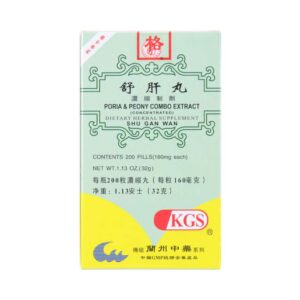 Shu Gan Wan – Poria And Peony Combo Extract – Lanzhou Traditional Herbs (KGS)
Shu Gan Wan – Poria And Peony Combo Extract – Lanzhou Traditional Herbs (KGS)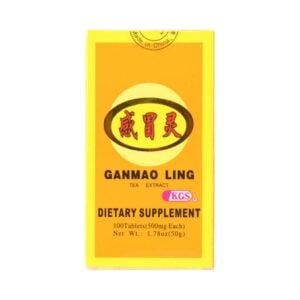 Ganmao Ling (Gan Mao Ling) – Lanzhou Traditional Herbs (KGS)
Ganmao Ling (Gan Mao Ling) – Lanzhou Traditional Herbs (KGS)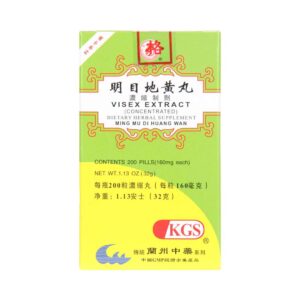 Ming Mu Di Huang Wan – Visex Extract – Lanzhou Traditional Herbs (KGS)
Ming Mu Di Huang Wan – Visex Extract – Lanzhou Traditional Herbs (KGS)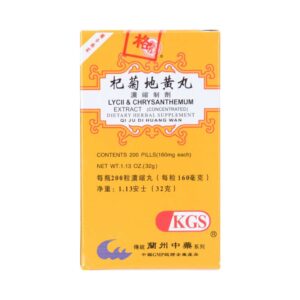 Qi Ju Di Huang Wan – Lycii And Chrysanthemum Extract – Lanzhou Traditional Herbs (KGS)
Qi Ju Di Huang Wan – Lycii And Chrysanthemum Extract – Lanzhou Traditional Herbs (KGS)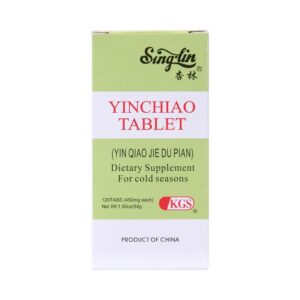 Yin Chiao (Yin Qiao Jie Du Pian) – by Sing-lin
Yin Chiao (Yin Qiao Jie Du Pian) – by Sing-lin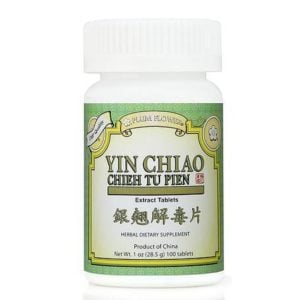 Plum Flower – Yin Chiao Chieh Tu Pien (Yin Qiao) – (OUT OF STOCK)
Plum Flower – Yin Chiao Chieh Tu Pien (Yin Qiao) – (OUT OF STOCK)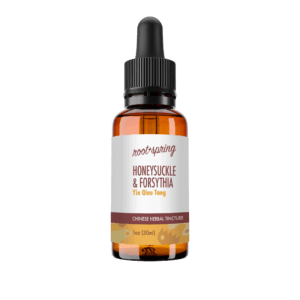 Yin Qiao Tang (Honeysuckle and Forsythia) – Liquid Extract (Tincture)
Yin Qiao Tang (Honeysuckle and Forsythia) – Liquid Extract (Tincture)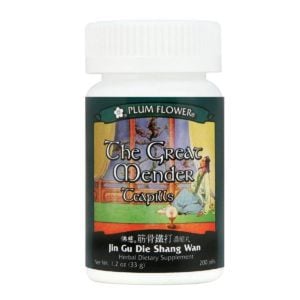 Plum Flower – The Great Mender (Jin Gu Die Shang Wan)
Plum Flower – The Great Mender (Jin Gu Die Shang Wan)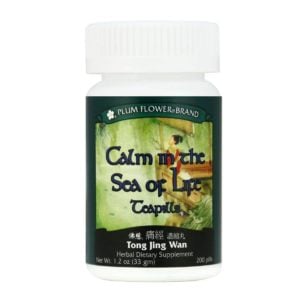 Plum Flower – Calm In The Sea Of Life (Tong Jing Wan)
Plum Flower – Calm In The Sea Of Life (Tong Jing Wan)
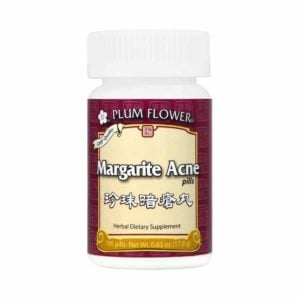 Plum Flower – Margarite Acne Pills
Plum Flower – Margarite Acne Pills